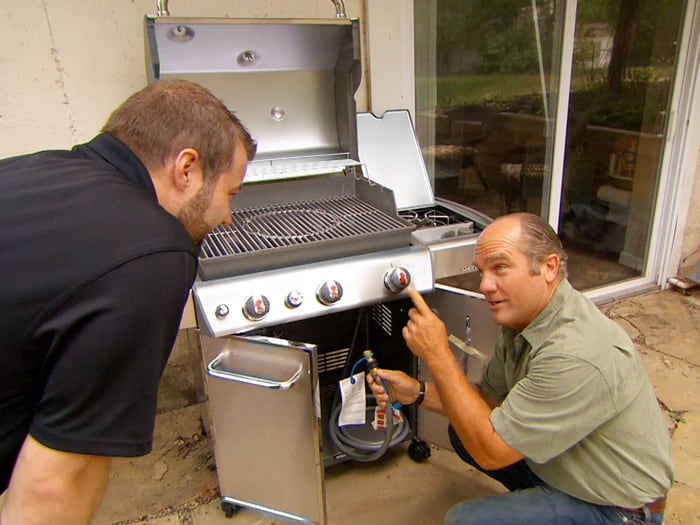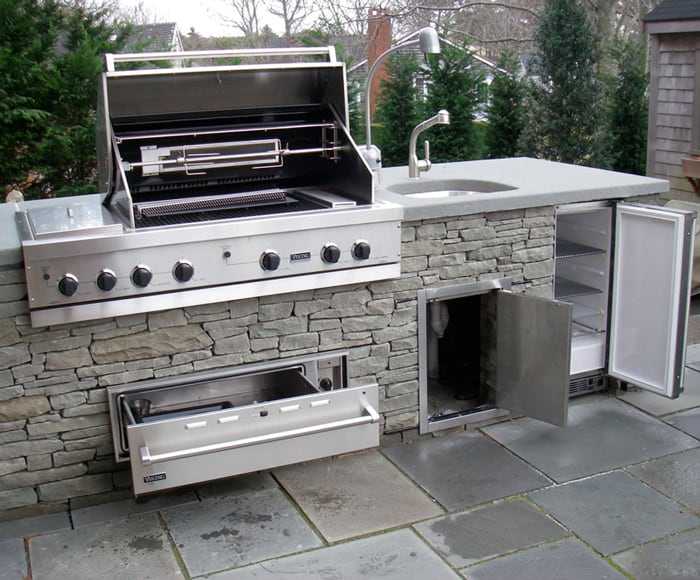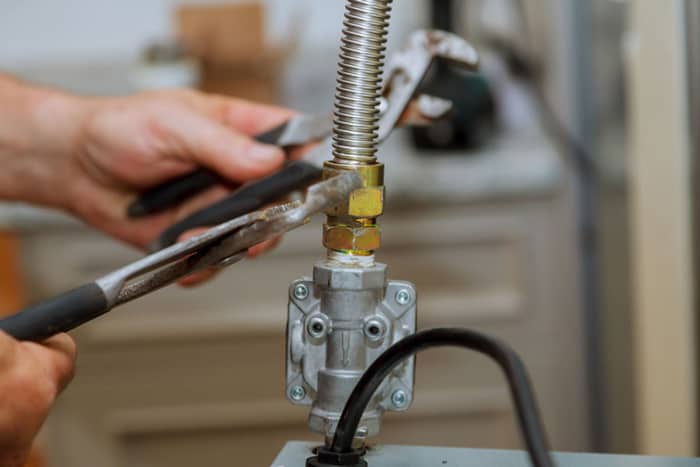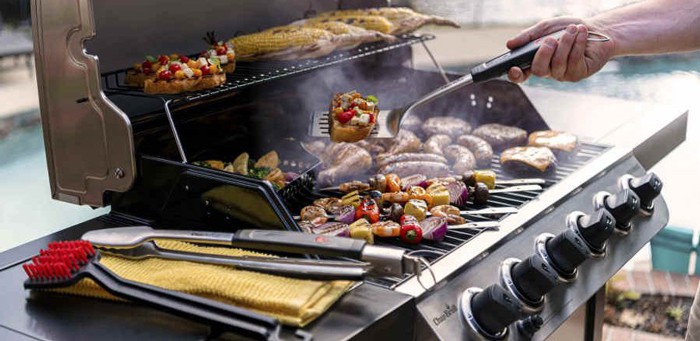If you have a natural gas line in your home, getting a natural gas grill will help you save costs and never run of out fuel mid-cook.
Before you start using your natural gas, however, you’ll need to first hook it up to your grill. This hookup process is relatively simple and you can do it on your own.
But you’ll need to follow the correct procedure and take maximum precaution for safety purposes.
Things You’ll Need:
- Natural gas rated grill
- Connection hose
- All the necessary natural gas fittings
How do you hook up a natural gas line to a grill?

Step 1: Gas line extension to outdoor cooking are
The first and most important thing in the natural gas to grill hookup process is to ensure you have a line routed to the outdoor cooking area. If you don’t have one already, you’ll need to get a professional to do gas line extension and permanent coupling in your outdoor grilling area.
Step 2: Turn off the main gas line valve
Now, you can get down to connecting your grill to the natural gas. But first, make sure you shut off the natural gas main shutoff valve for safety reasons. This is located just before your gas meter and usually comes in the shape of a rectangular nub. Using a pipe wrench will help you easily open/close this valve.
Step 3: Install the hose
For this step, you’ll need to have a free gas coupling on an outdoor wall where you’ll connect your gas grill…like you need an electrical outlet to plug in your SUB charging cable to start charging your smartphone.
Assuming you already hired a professional to install the coupling for you in step 1, this is where you get it to use.

With the coupling closed, connect one end of your hose to it and the other end to your gas grill.
Side Note: Natural gas grills usually come with about 10ft. hose for connecting your grill to supply line. We advise you against connecting more than hoses together in case you need to extend it as it might end up affecting your grill performance.
If you need a lengthier hose, over 10 feet, consider hard piping your natural gas supply to the grill.
Step 4: Inspect the connection for leaks
At this point, everything is set up and almost ready for use. But one more critical step remains—checking your new connection for any possible leaks.
The easiest way to conduct this step is by applying the soapy water to all the connectors and adapters sitting between your grill and the coupling. Turn on the gas at the main valve and coupling. Look out for bubbles forming around the adapters and connectors.

The presence of any single bubble means there’s a leak, which can turn out to be a safety hazard. Replace the hose immediately or call in your local gas technician to fix the issue.
Otherwise, if you can’t see any bubbles, that means your system is 100% safe and ready for use.
Step 5: Turn off the gas when done
This might sound simple but people always forget this important step when they’re done barbecuing their meat.
Don’t just turn off your grill, but make sure you turn off the gas at the coupling.
We also suggest inspecting your hookup system periodically for any leaks and taking the necessary to have them fixed (in case of any).
Bonus Step: Rustproof your gas pipe
Truth be told, the outdoor metal pipe you just installed on your wall is exposed to all manner of elements including water and moisture. And if you leave it exposed to These elements, it will rust. With time, the pipe becomes corroded and weaker and might be a looming danger.
Luckily, you can prevent this by spraying your outdoor gas pipe with rustproof spray paint.
Can you connect a propane grill to a natural gas line?
Natural gas convenience over propane gas is that you can grill without worrying about your gas getting used up mid-cook or dealing with frequent propane gas tank replacements.
If you own a propane gas grill instead of a natural gas-rated one, you might be wondering if you can safely hook it to a natural gas line.

You can hook a propane gas grill to a natural gas line, but you’ll first need to convert the grill for natural gas use.
This process involves three simple steps outlined below:
Step 1: Study your propane gas grill
BEFORE you attempt to convert your propane grill, you need to carefully study it to ensure it’s designed with dual fuel capabilities. Your user manual will be a good reference point.
Step 2: Install the conversion kit
If your propane grill can be used with natural, get a conversion kit that lets you turn it into a natural gas grill. You can easily know the type of conversion kit you need by referring to your grill’s rating label.
Turn off the natural gas line at the main valve and follow the kit manual on how to convert your propane grill to a natural gas grill (check the video below on how to do the conversion).
Step 3: get down to grilling!
After you have successfully converted your grill and everything is running smoothly, you can now get down to grilling your favorite recipe!
Final verdict
Hooking your natural gas line to your natural gas is a simple DIY step as you have learned in this guide. Follow the simple steps above to get it done and start grilling without worrying about your grill running out of fuel midway through the grilling process.
If you have a propane gas grill that can work with a natural gas line, you can also hook it up with the help of a conversion kit and start enjoying the convenience that comes with natural gas over propane gas.

